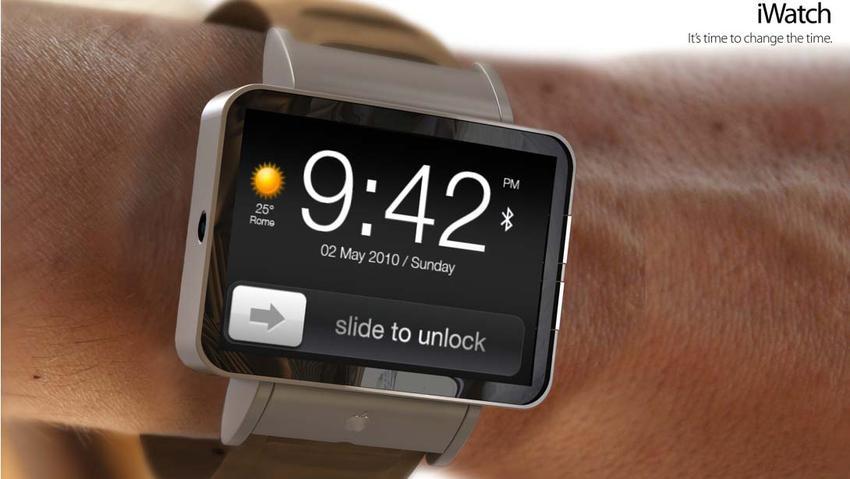
IWatch press release photo – http://www.botoxbeerbling.com/wp-content/uploads/2013/05/apple-watch1.jpg
September 10, 2014: Less than a week ago, Apple seemed to be on the ropes. Blindsided by the iCloud Nude Photo Celebrity Scandal and upstaged by Samsung’s Galaxy Note 4 release announcement, many questioned whether Apple remained relevant.
But Apple’s star-studded event on September 9th, which revealed both an updated iPhone 6 line and the Apple Watch (AKA “iWatch”), showed the world that Cupertino is hardly finished as either a technology powerhouse or visionary taste maker.

It further demonstrated that the technology and fashion industries aren’t just converging — they’ve merged into one single, globe-spanning hype-driven, mega-entity.

Cnet review photo of Galaxy 4 Note. http://cnet2.cbsistatic.com/hub/i/r/2014/09/02/a47a7bcf-b803-4bbb-835c-c60067253d7f/resize/770×578/d397f6346b62b2910c89d48670c4ffaf/samsung-galaxy-note-edge-product-photos24.jpg
Why This Merger Makes Perfect Sense
Today, tech industry events resemble Fashion Avenue runway shows more than they do the dry, geek-dominated presentations of yore. For example, check out NYC’s Wearable Tech Expo. Here, wearable technology “Blogarazzis” stalk participants as closely as the fashion press does in Paris and Milan.
Many traditional fashion houses now have distinct digital and technology presences. For example, Ralph Lauren has been aggressively pursuing a place in this space, and luxury eye wear designer Luxottica collaborated with Google on the Glass. Alina Rucha’s Smart Hoodie incorporates standard GSM phone technology and responds to swipes and gestures for a truly hands free experience.
Fashion and technology have come together because, in reality, the differences in these two industries have — for the past 20 years — been outweighed by their similarities, including the following:
1. A relatively small, self-appointed elite (technology and fashion journalists, both based in coastal U.S. cities) decides what’s cool, what’s in, and what’s out.
2. What one wears (or, for tech, the software and hardware that one uses) is a critical marker of social class, status, prestige, social influence, and economic power.
3. Because intellectual property rights are only loosely enforced in both fashion and tech, imitation is as important — some would argue more important — than innovation in both fashion and technology. For example, without “Hot or Not” (a popular late 1990s Internet phenom), Facebook would not exist today.
4. Despite the fact that it’s rare to see a photo in either Wired or Vogue of anyone more than a few days over 30, both fashion and tech are run by people much older than the consumers of their products. (Ana Wintour is older than Tim Cook, but not that much older).
5. Today’s technology products tend to have shelf lives shorter than designer T-shirts. For example, hundreds of Galaxy Gear smart watches became available on Ebay only months after this product’s hyped release. Furthermore, one third of wearable devices are abandoned within six months of their purchase. These products weren’t junked because they didn’t work — only that they were “no longer cool.”
6. Competition in both tech and fashion is fierce and unforgiving. Right now, in the wearable tech space, Apple faces competition from Mica bracelet, which promises touch screen functionality combined with high-fashion aesthetics, and many other contenders. Rebecca Minkoff’s Notification and Charger Bracelets could go with any piece of couture, and even Google seeks to tap into fashionable cool, with these new Google Glasses designed by Diane Von Furstenburg:
[youtube id=”_WVfBwCMnDE” width=”600″ height=”350″]What’s a Marketer To Do?
How can digital marketers get a better handle on the merged world of fashion and tech?
1. Get familiar with wearable technology trends. Mashable has an excellent wearable tech blog and often writes from a digital marketer’s viewpoint. As technology becomes dominated by mobile, wearable tech devices will become a channel for advertising. Blogs like Wearable Tech Watch and Fashioningtech.com will help you keep on top of wearable fashion trends.
2. Understand how various advertising channels will be affected by wearable tech. This article discusses the dawn of paid advertising on wearable devices. It’s possible that paid placement of this kind will be part of Google’s long term strategy.
3. Follow various forums on social media. Reddit has several forums devoted to wearable tech, such as r/wearabledevice. On Twitter, you can follow accounts such as @wearabletech.
Have questions about digital marketing? Contact us.
- 10 Mistakes to Avoid When Using QR Codes for Marketing - September 20, 2023
- Kevin Lee on How AI Changes the SEO Landscape - August 31, 2023
- The Power of Compound Marketing: Kevin Lee Presents @ 1MediaWorld 2023 Global Conference - March 7, 2023
